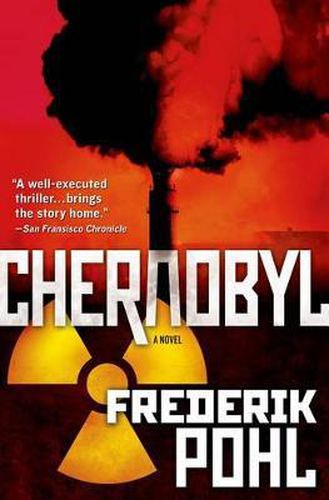Readings Newsletter
Become a Readings Member to make your shopping experience even easier.
Sign in or sign up for free!
You’re not far away from qualifying for FREE standard shipping within Australia
You’ve qualified for FREE standard shipping within Australia
The cart is loading…






Chernobyl: The very name conjures the catastrophe that the world feared could happen someday at a nuclear power plant. On April 26, 1986, a power surge caused the core of one of the reactors to explode, spewing a cloud of radioactive steam into the air. More than four thousand people died, as many as a half-million suffered potentially cancer-causing exposure, and the city around the plant became a toxic wasteland in which nothing could live. Before the disaster at the Chernobyl plant, nuclear catastrophe had been only a fear, a threat. But when the Chernobyl plant was destroyed, those fears were suddenly all too real.
Frederik Pohl’s novel about this disaster was written months after the tragic events. He had the cooperation of many people inside the USSR with access to technical information and first-person accounts of the events of what is still the most tragic nuclear event in human history and only one of two level-7 nuclear accidents, along with the Fukushima disaster of 2011.
This is fiction, but it is the most riveting, realistic account of what happened that has ever been written. It is also a cautionary tale that reminds us of the dangers of nuclear power plants and the terrible devastation they can unleash.
Including a new Afterword by the author, this is an important book.
$9.00 standard shipping within Australia
FREE standard shipping within Australia for orders over $100.00
Express & International shipping calculated at checkout
Stock availability can be subject to change without notice. We recommend calling the shop or contacting our online team to check availability of low stock items. Please see our Shopping Online page for more details.
Chernobyl: The very name conjures the catastrophe that the world feared could happen someday at a nuclear power plant. On April 26, 1986, a power surge caused the core of one of the reactors to explode, spewing a cloud of radioactive steam into the air. More than four thousand people died, as many as a half-million suffered potentially cancer-causing exposure, and the city around the plant became a toxic wasteland in which nothing could live. Before the disaster at the Chernobyl plant, nuclear catastrophe had been only a fear, a threat. But when the Chernobyl plant was destroyed, those fears were suddenly all too real.
Frederik Pohl’s novel about this disaster was written months after the tragic events. He had the cooperation of many people inside the USSR with access to technical information and first-person accounts of the events of what is still the most tragic nuclear event in human history and only one of two level-7 nuclear accidents, along with the Fukushima disaster of 2011.
This is fiction, but it is the most riveting, realistic account of what happened that has ever been written. It is also a cautionary tale that reminds us of the dangers of nuclear power plants and the terrible devastation they can unleash.
Including a new Afterword by the author, this is an important book.